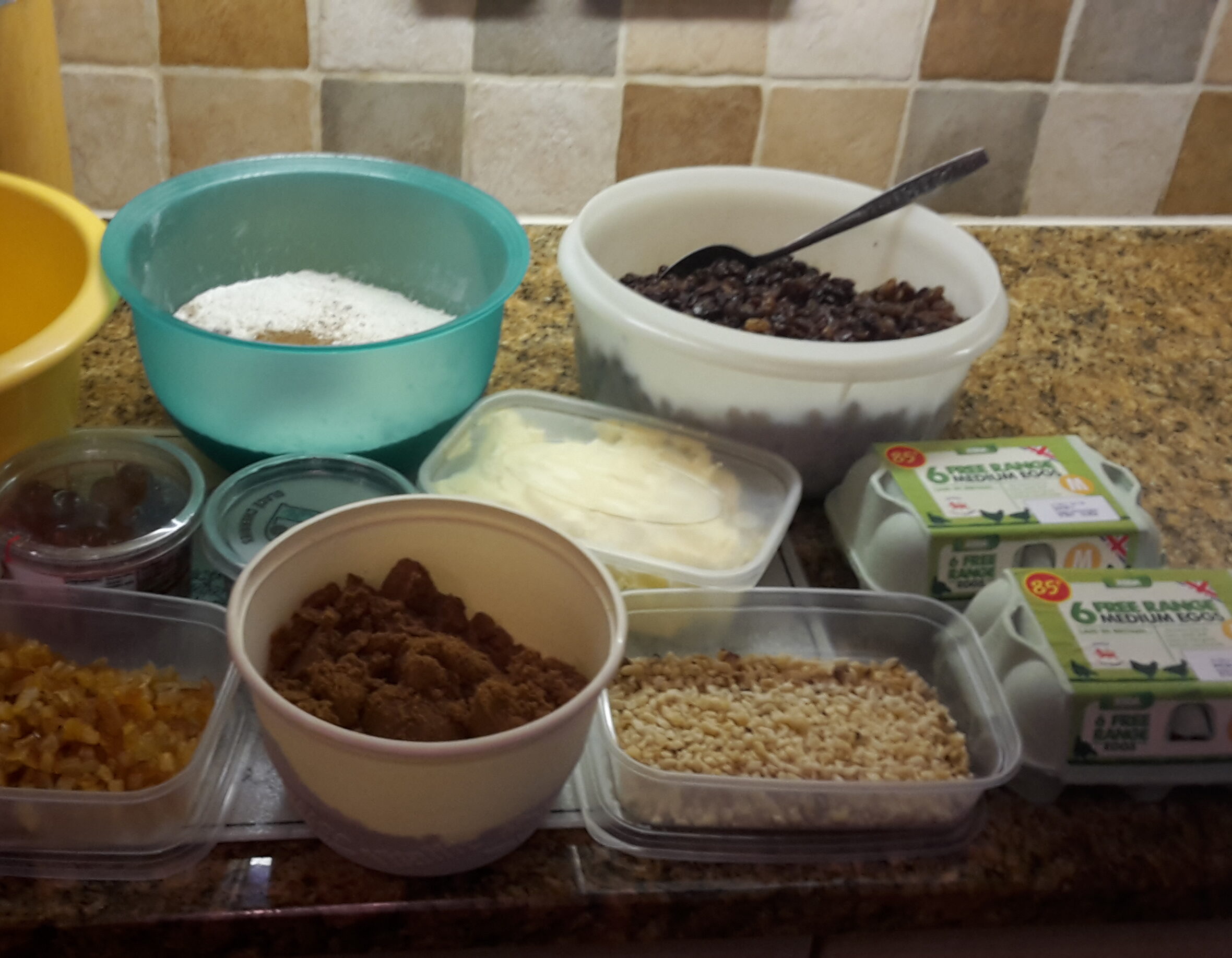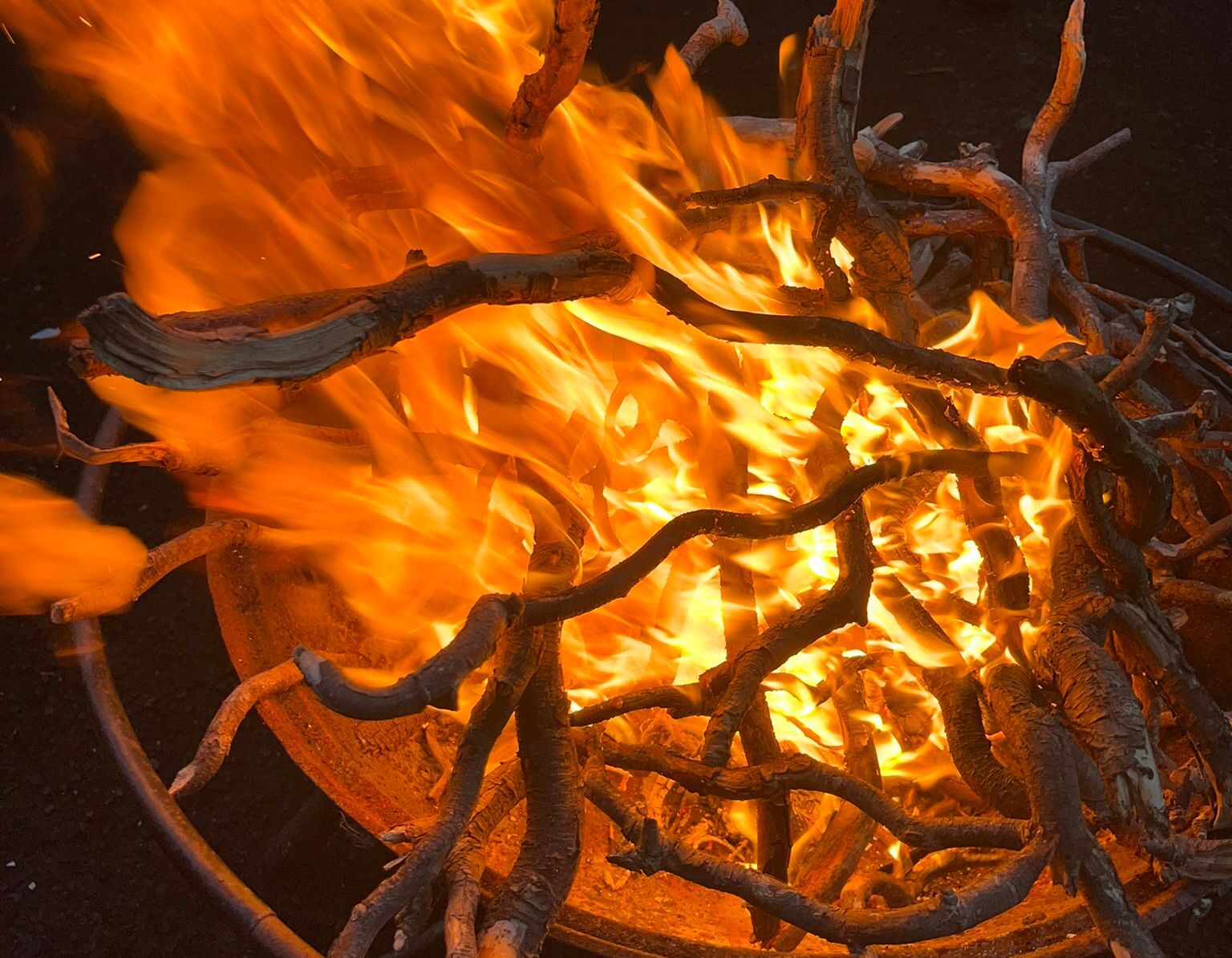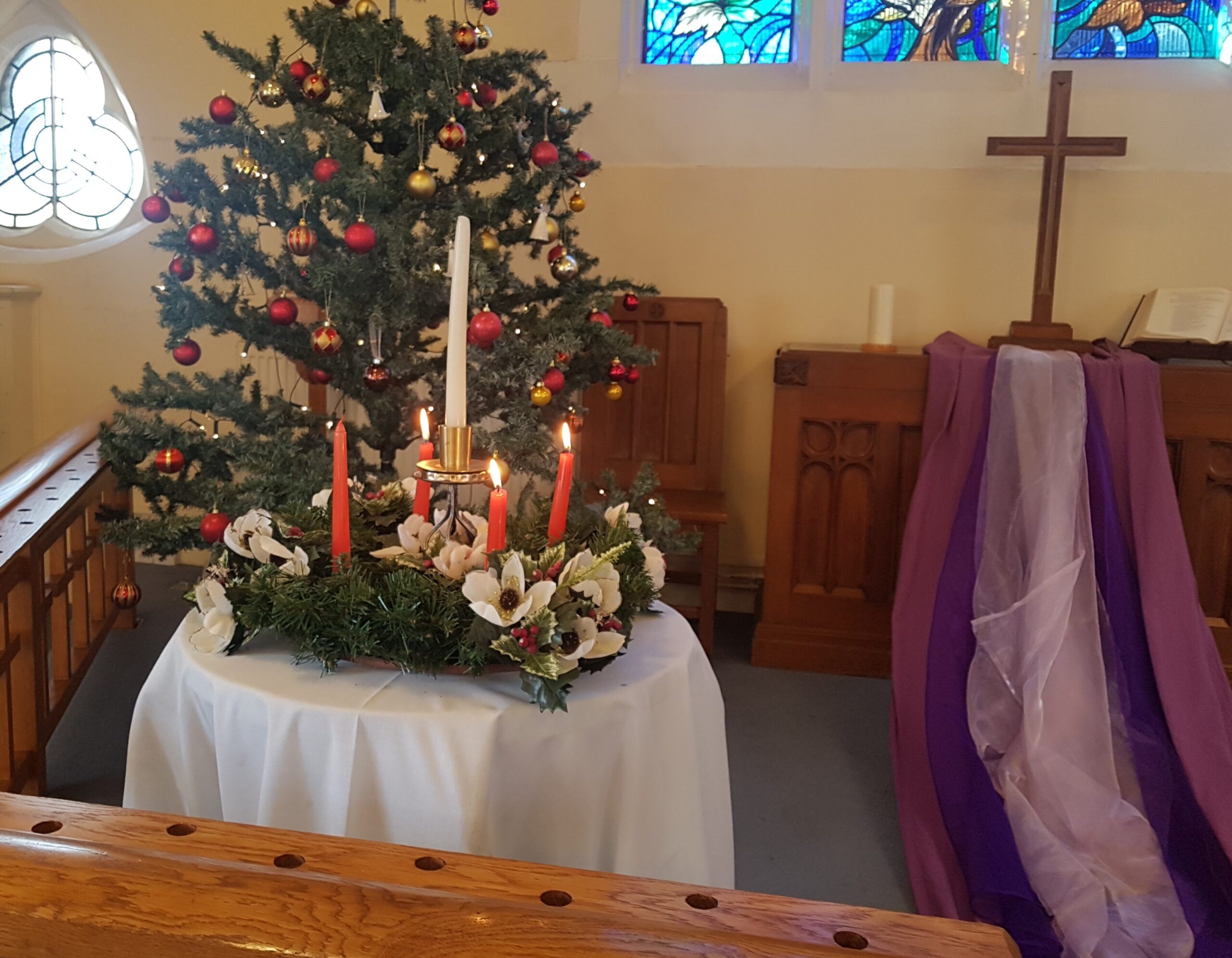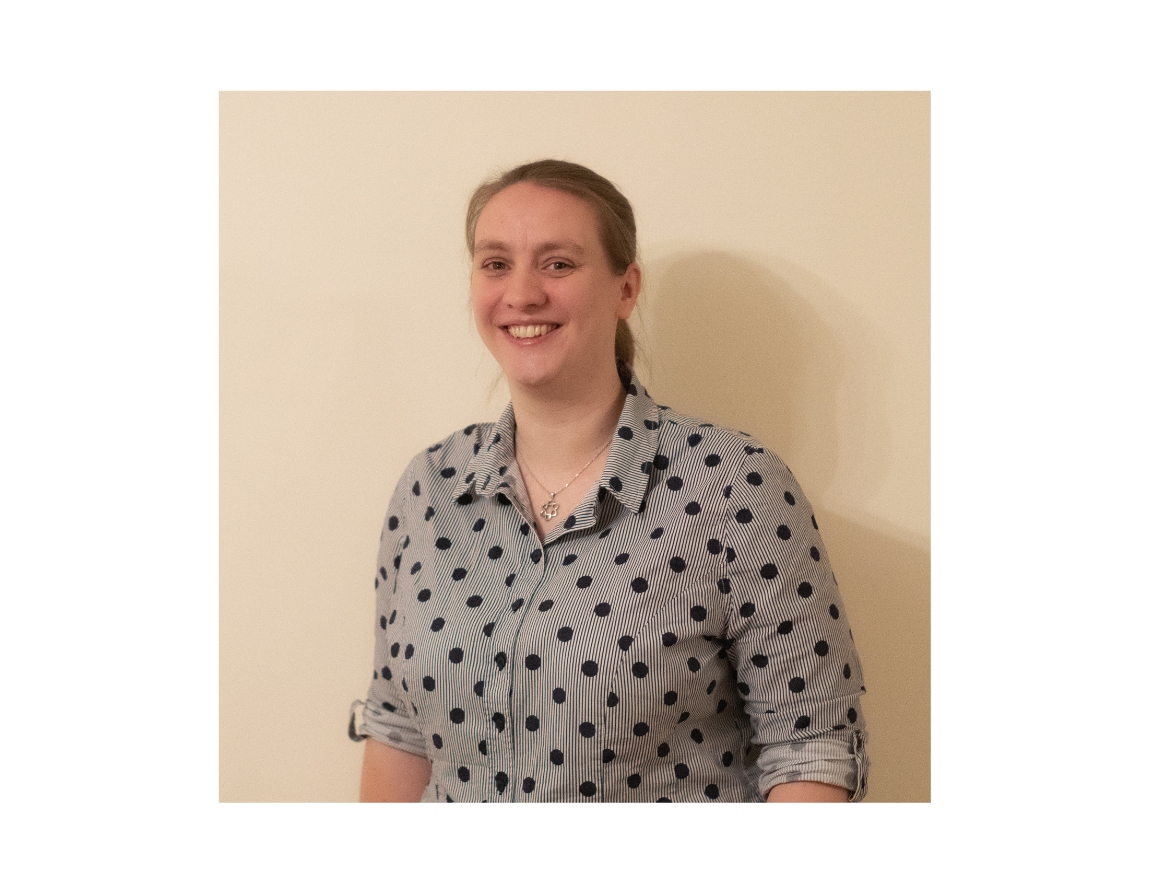Our ministry teams share personal reflections on Advent. The second in the series comes from Sally O’Hare of Messy Church.
1 December 2024
A very special recipe
Advent is a time of preparation, of making ready to welcome the coming Messiah. It is also a season when we tend to be busy with many practical preparations. I have no idea what these are for your family, but in mine lots of the preparation centres around food, especially making the Christmas cake. This starts long before Advent, if I’ve been organised, with soaking the fruit. Then comes the baking of the cake and, through Advent, the feeding of the cake with alcohol. Finally as we approach Christmas, said cake is covered in marzipan and iced.
I most associate Christmas cooking, and Christmas preparations in general, with my mum. She loved the fun of preparing and the joy of celebrating together. The first October after she died, as I was starting to prepare the Christmas cake, I realised I had a problem. Although I had helped with all the different stages in making the cake at one time or another, I had never followed one all the way through. To complicate matters further, like many of my mum’s recipes, the secrets of the Christmas cake were not written down. I knew it was a rough amalgamation of three different recipes in the huge folder where she kept all the recipes she’d accumulated over the years, but I had no idea of the actual proportions.
A mathematical approach
In the end I made a table of all three recipes and took an average of them. This led to some fun maths and far more fractions than I was happy with: of course, an added challenge was that all mum’s recipes were in imperial weights and measures!
Fortunately fruit cake is a very forgiving mixture, so the experiment that year and in the years since has been largely successful. There was just a slight issue one year when either I didn’t bake it quite long enough or I was over-enthusiastic with the alcohol; whatever the cause, we had to declare that year’s cake off limits to drivers!

Advent is a time of preparation. In my family, lots of the preparation centres around food.
Honouring traditions
Honouring traditions often feels very important in church life as well as in family life. But sometimes, in both settings, we can get so bound up in what we’ve always done that we never try anything new. It’s not uncommon for adults to regress to childhood when they go home for Christmas, and sulk if things are not exactly as they remember them from an idealised past.
Something similar can also happen when we go to church during Advent and Christmas. If things aren’t as we expect, or something is missing from the traditions we remember, it can feel wrong and make us unsettled and out of sorts.
But sometimes it can be good to step outside of tradition, to try something new and different. If we’re open to what we might learn from doing things differently, it can be a rich and rewarding, faith-deepening experience.
Sparklers and marshmallows
For example, Get Messy Volume 1 features a ‘Christmas round the fire’ session. For my Messy Church this was a very different way of worshipping together. But as we gathered round a firepit in the church carpark, I found myself thinking about the shepherds in the nativity story. They too would have huddled round a fire, not knowing how suddenly and completely their world was about to change. Being the first to hear the good news, how must they have felt?
I went on thinking about it for days – such a different way of telling the story of Christ’s birth, of celebrating together with sparklers and toasted marshmallows – and I realised that taking a risk and doing things differently can be an incredibly helpful and creative thing to do, in church as well as in the family.

I went on thinking about it for days – such a different way of telling the story of Christ’s birth.
Photo © Gemma Welch
The journey is important
It is tempting to fast forward during Advent (just as I have done above!) and head straight to Christmas. After all, we know how the chapter ends! But I do believe it’s important to journey through Advent each year. If your church uses an Advent wreath, you will be familiar with the gradual progression through the season, with each candle symbolising the journey through hope, to the prophets, then to John the Baptist and then to Mary, before the central Christ candle is lit. This slow annual journey reminds us of the centuries of waiting, of hoping, of holding on in faith.
For me, in recent years Advent has become a season infused with grief. My mum died towards the start of December so that first Advent without her, and subsequent ones, have been times of grief. But associating grief with Advent is not out of place. Advent, with its patient preparations and reminders of a long-promised Messiah, is a time of waiting with God, of sitting in the moment and learning to live with life’s uncertainties.
For me, the image of the slowly multiplying candle lights on the Advent wreath is the most powerful symbol of the season. Each small, flickering flame represents something of the long tradition of prophecy and hope. The gentle light in the gloom draws me in, inviting me to stop, pause, linger a while in the presence of God: a God who does sit with us in our gloom, who waits patiently, gently, calmly for the Light of the world to be born and to radiate out.

For me, the image of the slowly multiplying candle lights on the Advent wreath is the most powerful symbol of the season.
I wonder where are you this Advent? What do you need to sit with patiently, leaving space for the Spirit of God to come alongside? What do you need to let go, to gently lay aside for this season? What signs of hope do you see? Where are the voices of prophets in your community? What could you do differently this year?

